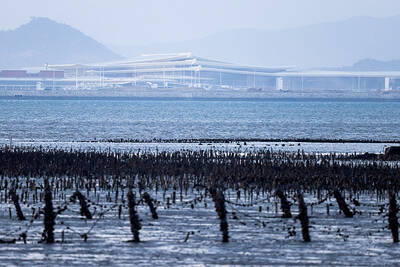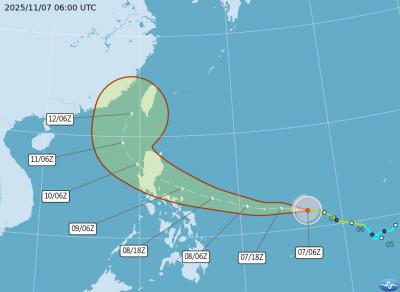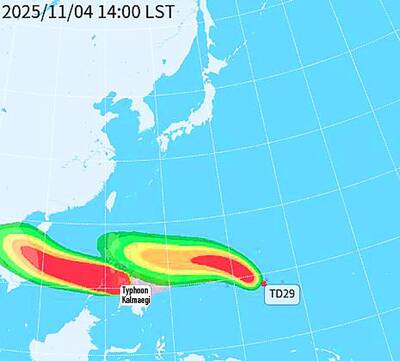China does not seem to be pursuing the amphibious lift capacity that would be necessary for a large-scale invasion of Taiwan, a report presented to US Congress said.
At the same time, China’s People’s Liberation Army (PLA) ground forces continue to prepare for a Taiwan-related contingency, the report said.
Prepared by the Congressional Research Service and titled The Chinese Military: Overview and Issues for Congress, the report was written by Asian affairs analyst Ian Rinehart and released this week.
It said that PLA ground forces have armed attack helicopters and other modern platforms, improved networks that enable real-time data transmission.
It is also continuing to improve its advanced air defense systems and practicing more realistic training exercises, including amphibious landing training, the report said.
“On the other hand, PLA weaknesses in areas like logistics and amphibious lift could render the PLA unable to carry out assigned missions, in particular an invasion of Taiwan,” it said.
“Both air lift and sea lift capacity remain major shortcomings for the PLA, constraining significantly its ability to carry out large-scale power projection operations,” it added.
The report said that over the past two decades, the main focus of the PLA’s military planning and short-term operational readiness has been a potential conflict over Taiwan.
Such planning might also be designed to deter Taiwan from declaring independence, the report said.
According to the report, an invasion of Taiwan would be a “daunting undertaking” for China.
“The potential intervention of the US to defend Taiwan would present enormous challenges for the PLA,” it said.
Rinehart said that China is building a modern and regionally powerful military with a limited, but growing capability for conducting operations away from China’s immediate periphery.
“The question of how the US should respond to China’s military modernization effort is a central issue in US defense planning and foreign policy,” he said.
Rinehart said that many American China-watchers assert that China’s main reason for strengthening the PLA is to ensure the status of Taiwan is resolved on terms favorable to Beijing.
He said that Pentagon and other analysts argue that China’s military modernization was explicitly designed to keep the US military from sending reinforcements to a conflict by controlling access to naval approach routes through a variety of stand-off attacks.
“The PRC does not consider its desire to unify with Taiwan and to consolidate control over islands in the South China Sea as strategically offensive, whereas many in the US and other countries see such ambitions as inherently offensive,” Rinehart said.

UNILATERAL MOVES: Officials have raised concerns that Beijing could try to exert economic control over Kinmen in a key development plan next year The Civil Aviation Administration (CAA) yesterday said that China has so far failed to provide any information about a new airport expected to open next year that is less than 10km from a Taiwanese airport, raising flight safety concerns. Xiamen Xiangan International Airport is only about 3km at its closest point from the islands in Kinmen County — the scene of on-off fighting during the Cold War — and construction work can be seen and heard clearly from the Taiwan side. In a written statement sent to Reuters, the CAA said that airports close to each other need detailed advanced

Tropical Storm Fung-Wong would likely strengthen into a typhoon later today as it continues moving westward across the Pacific before heading in Taiwan’s direction next week, the Central Weather Administration (CWA) said. As of 8am, Fung-Wong was about 2,190km east-southeast of Cape Oluanpi (鵝鑾鼻), Taiwan’s southernmost point, moving westward at 25kph and possibly accelerating to 31kph, CWA data showed. The tropical storm is currently over waters east of the Philippines and still far from Taiwan, CWA forecaster Tseng Chao-cheng (曾昭誠) said, adding that it could likely strengthen into a typhoon later in the day. It is forecast to reach the South China Sea

WEATHER Typhoon forming: CWA A tropical depression is expected to form into a typhoon as early as today, the Central Weather Administration (CWA) said yesterday, adding that the storm’s path remains uncertain. Before the weekend, it would move toward the Philippines, the agency said. Some time around Monday next week, it might reach a turning point, either veering north toward waters east of Taiwan or continuing westward across the Philippines, the CWA said. Meanwhile, the eye of Typhoon Kalmaegi was 1,310km south-southeast of Oluanpi (鵝鑾鼻), Taiwan’s southernmost point, as of 2am yesterday, it said. The storm is forecast to move through central

Almost a quarter of volunteer soldiers who signed up from 2021 to last year have sought early discharge, the Legislative Yuan’s Budget Center said in a report. The report said that 12,884 of 52,674 people who volunteered in the period had sought an early exit from the military, returning NT$895.96 million (US$28.86 million) to the government. In 2021, there was a 105.34 percent rise in the volunteer recruitment rate, but the number has steadily declined since then, missing recruitment targets, the Chinese-language United Daily News said, citing the report. In 2021, only 521 volunteers dropped out of the military, the report said, citing